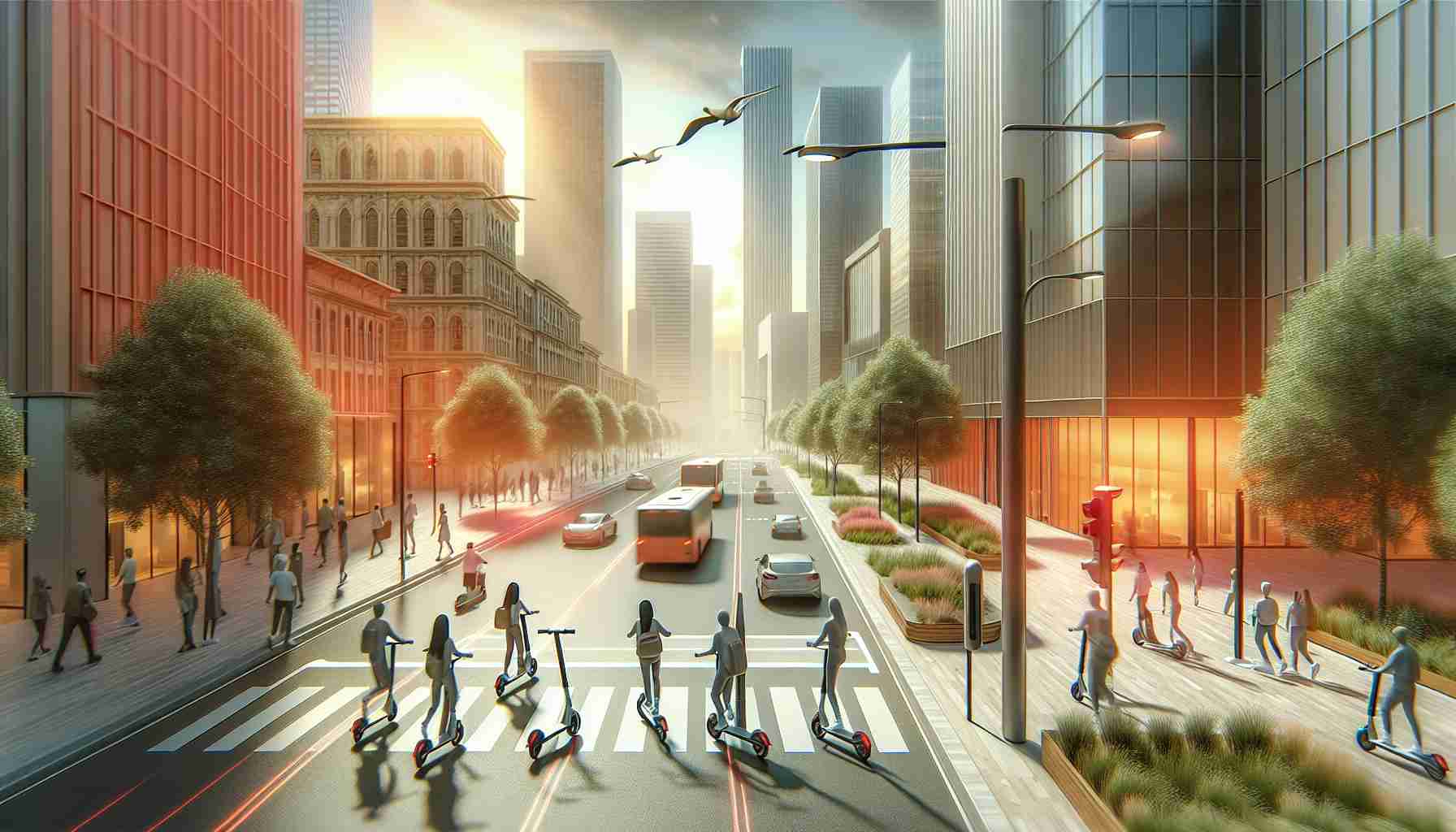Urban commuting is experiencing a dramatic shift, thanks to the rise of electric scooters. These compact, sustainable machines offer an efficient alternative for navigating bustling city streets, addressing both congestion and environmental concerns.
Redefining Urban Mobility
Electric scooters are becoming a favored option for city dwellers seeking to avoid the hassle of traffic. With their sleek design, they allow riders to maneuver through tight spaces and take paths inaccessible to larger vehicles. For short distances, they often provide a quicker route than cars or public transit, eliminating the headache of parking and delays.
Affordability also plays a crucial role in their popularity. Unlike cars or motorcycles, e-scooters come with lower initial costs and ongoing expenses. Their electric engines mean no rising fuel prices, and they require far less maintenance, making them a gem for budget-conscious commuters.
An Eco-Conscious Choice
As cities strive towards sustainable living, e-scooters present a cleaner mode of transport. They operate without harmful emissions, helping to combat air pollution when riders choose this green alternative. Many urban centers are launching shared e-scooter programs, promoting community-wide adoption and facilitating a shift away from traditional vehicle use.
Accessibility for Everyone
E-scooters are designed for ease of use, welcoming riders of all skill levels. Their straightforward controls make them approachable for individuals of varying ages and backgrounds. Plus, in areas lacking adequate public transit, these scooters serve as an invaluable “last-mile” option, efficiently bridging the gap from transit to destination.
Adapting to Safety and Infrastructure
While e-scooter usage rises, safety remains a priority. Their small size can pose visibility issues, prompting calls for helmet use and adherence to traffic rules. In response, cities are enhancing infrastructure with dedicated lanes and charging stations, supporting safer riding experiences.
Urban Innovation on the Rise
The e-scooter trend is igniting a wave of innovation in urban transport. Manufacturers are continuously improving designs, focusing on longer battery life and safety enhancements. Integration with smartphone technology allows users to track routes and battery status with ease.
As cities pivot towards accommodating this new mode of mobility, urban landscapes are evolving to prioritize sustainable transport solutions, enriching life for all. The electric scooter movement is not merely changing how we commute, but steering us toward a greener, more efficient future.
Revolutionizing City Travel: The Future of Electric Scooters
Urban Commuting Transformation
The urban commuting landscape is rapidly evolving, with electric scooters at the forefront of this transformation. As cities grow increasingly congested and environmentally conscious, e-scooters are emerging as a practical and sustainable solution for navigating urban environments. These compact vehicles not only provide an agile way to travel short distances but also offer an eco-friendly alternative to traditional transportation modes.
Key Benefits of Electric Scooters
1. Cost-Efficiency: One of the most attractive aspects of electric scooters is their affordability. The initial purchase price for e-scooters is significantly lower than that of cars or motorcycles, and the long-term savings on fuel and maintenance costs make them an economical choice for daily commuters.
2. Environmental Impact: With electric scooters producing zero tailpipe emissions, they contribute to improved air quality in cities. This aligns with the global push for greener urban living and supports efforts to combat climate change. Many cities are also integrating e-scooter use into public transport systems to encourage environmentally friendly commuting.
3. User-Friendly Design: E-scooters are crafted for simplicity and accessibility. Their lightweight build and intuitive controls cater to a diverse demographic, including young adults and older individuals. Additionally, they serve as an excellent last-mile solution, connecting riders from transit hubs to their final destinations.
Safety and Infrastructure Developments
As the popularity of electric scooters surges, city planners are prioritizing safety and infrastructure improvements. This includes the development of dedicated scooter lanes and thoughtful regulations that encourage responsible riding practices. Some cities have even introduced mandatory helmet laws to protect riders.
Technological Innovations
The electric scooter market is witnessing an influx of technological advancements. Manufacturers are focusing on enhancing battery life, with many models now offering longer ranges between charges. Additionally, built-in GPS and smartphone connectivity allow riders to plan efficient routes and monitor battery status through dedicated apps.
Market Trends and Future Predictions
The electric scooter market is projected to continue its growth trajectory. As urban populations increase and car ownership trends shift, the demand for efficient and reliable alternative transportation methods is expected to rise. For companies in this sector, there is a significant opportunity to capitalize on sustainability trends while addressing city transportation challenges.
Pros and Cons of Electric Scooters
– Pros:
– Cost-effective
– Eco-friendly
– Easy to learn and use
– Reduces congestion
– Cons:
– Safety concerns regarding visibility and traffic interactions
– Potential for vandalism and misuse in shared programs
– Weather limitations affecting usability
As cities adapt to accommodate the electric scooter phenomenon, this revolutionary mode of transport is not only reshaping how urbanites navigate their surroundings but also influencing infrastructure, environmental practices, and urban living standards. For more information about sustainable transportation options, visit Urban Mobility.
